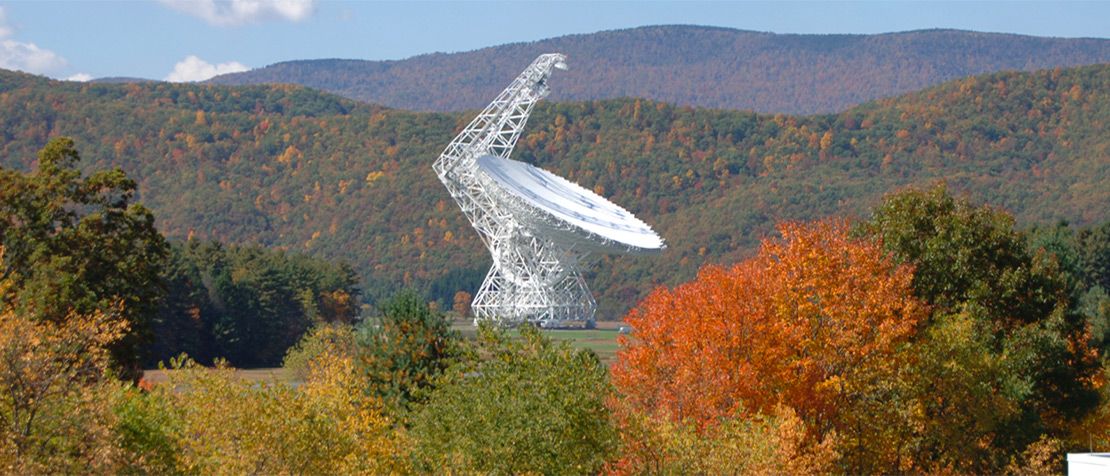
Radio astronomy spectrum management and WRC-19
*This article was originally published in the recent ITU News Magazine edition “Managing spectrum for evolving technologies.” Any views expressed in this article do not necessarily reflect those of ITU.
Astronomy is the study of our place in the universe, and the radio astronomy service is responsible for many exciting discoveries in this grand endeavour. Whether imaging massive black holes in the centres of distant galaxies or watching new planetary systems form around nearby stars, radio astronomy’s success depends on the careful management of radio spectrum. Radio astronomy will be strongly affected by the outcomes of the World Radiocommunication Conference 2019 (WRC‑19), so it is a great privilege to contribute to this special edition of the ITU News Magazine.
Radio telescopes driven to “remote” sites
The discovery of cosmic radio waves by Karl Jansky in 1932 and the discovery of radio emission from the primordial Big Bang by Penzias and Wilson in 1964 were by-products of measurements to determine the noise contributions to telecommunication systems.
Whether imaging massive black holes in the centres of distant galaxies or watching new planetary systems form around nearby stars, radio astronomy’s success depends on the careful management of radio spectrum.
But the meadow where Jansky worked isn’t used for radio astronomy now, as the need to avoid terrestrial interference has driven radio tele‑ scopes to remote sites that may also offer better high-frequency observing conditions. But the meaning of “remote” has changed: places that once seemed isolated are now merely suburban.
Truly remote areas range from the merely less-in‑ habited to the barely habitable, and the costs of operating there are considerable. In any case, new and old facilities alike require spectrum protection, and nowadays no site is hidden from high-altitude platforms, aircraft and satellites.
Related: Read the latest ITU News Magazine here
WRC‑19 agenda items that impact on radio astronomy
Some WRC‑19 agenda items stand out for their potential impact.
WRC‑19 agenda item 1.13 — compatibility with 5G
Agenda item 1.14 — the challenge of HAPS
Potential HAPS operators made substantial con‑ cessions in the levels of unwanted emissions at which they committed to illuminate radio tele‑ scopes, but the need for radio astronomy operators to avoid HAPS platforms’ strong downlink signals will nonetheless require modification of RAS operations.
Agenda item 1.6 — concerns for optical astronomy
Agenda item 1.6 touches on a subject of great concern — spectrum for use by large fixed-satellite service (FSS) constellations in low Earth orbit (LEO) at 37–42.5 and 47–51.4 GHz. Comparable FSS LEO systems operating at 10.7–12.75 GHz are already being launched and have been of recent concern for their impact on the visual appearance of the night sky and optical astronomy more generally. Radio astronomy use of its primary allocation at 42.5–43.5 GHz is protected by Footnotes No. 5.551H and 5.551I in the Radio Regulations (RR), but the FSS systems studied under agenda item 1.6 were never defined with sufficient precision to identify the specific measures that FSS operators would have to take to meet the protection thresholds.
Agenda item 1.15 — a step towards allocating spectrum above 275 GHz?
Agenda item 1.15 addresses fixed service and land mobile service use of spectrum at 275–450 GHz, beyond the uppermost frequency allocations in Article 5.
Radio astronomy looks forward to working with other services to bring WRC‑19 to a successful and mutually satisfactory conclusion.
Until now, this frequency range has been the near-exclusive province of radio astronomy and the Earth exploration satellite service (passive), with spectrum bands identified for use by their applications in RR Footnote No. 5.565. At WRC‑19, a comparable footnote may be crafted identifying spectrum that can be used by the fixed and land mobile services, with consideration of compatibility but without regulatory constraints. Is this a step toward allocating spectrum above 275 GHz? Stay tuned.
Radio astronomy — a radio service or radiocommunication service?
Because it receives only cosmic radiation (or so we hope), radio astronomy has a somewhat unusual status in the ITU Radiocommunication Sector (ITU–R): it is a radio service but not a radiocommunication service. This could change if the radio search for extraterrestrial intelligence (SETI) succeeds and we begin to communicate with alien life forms in their protected frequency bands. In the meantime, RR No. 4.6 states “For the purpose of resolving cases of harmful interference, the radio astronomy service shall be treated as a radiocommunication service.” This is unambiguous and rendered comparably in French. But a second sentence addressing unwanted emissions differs in the French and English, and reconciling the difference will be discussed at WRC‑19 under agenda item 9. This arcane subject is of great interest to radio astronomy because it concerns some of the most basic aspects of its operation as a radio service.
A new generation of radio telescopes
Astronomy might seem to be way “out there,” but it is actually done “right here”, and a new generation of radio telescopes is being constructed on scales that were scarcely imaginable a few decades ago. The mm/sub‑mm ALMA array operating at 5000 m elevation was recently inaugurated in Northern Chile, the Square Kilometre Array is under development in Australia and South Africa, and planning for the next-generation VLA (ngVLA) is underway in the United States.
Towards success for radio astronomy at WRC‑19
IUCAF’s world map of radio telescopes and quiet zones is available here. Operating such instruments in the terrestrial environment of an increasingly crowded sky and busy radio spectrum presents a variety of challenges, but underlying everything is access to the radio spectrum. Radio astronomy looks forward to working with other services to bring WRC‑19 to a successful and mutually satisfactory conclusion.

